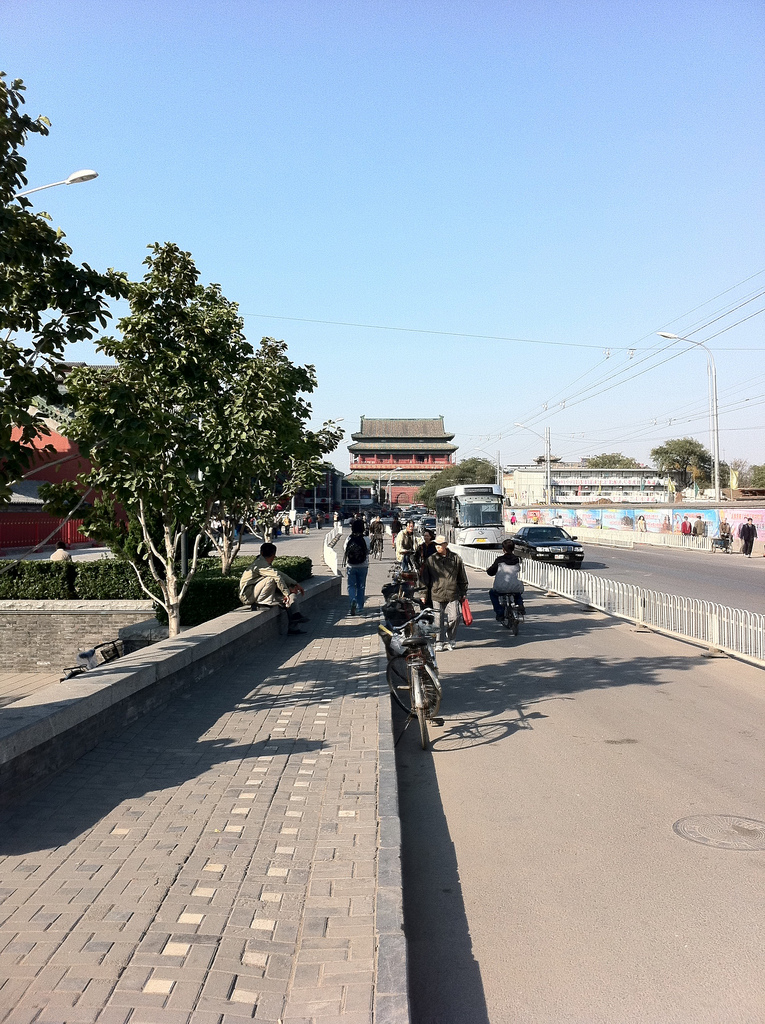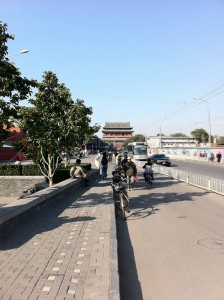That title actually addresses the fact that this post is about two different things, so apologies if that was misleading. I have just been doing several, slightly disparate activities over the last few weeks that have spurred some thinking in some completely unrelated areas. Granted, I am stretched a little thin, but at least it is spurring some blog fodder.
The multi-dimensional nature of synchronous collaboration
Fiona Littleton of the University of Edinburgh’s MSc in Elearning program(me) (this was my program and I couldn’t have been happier with it) had asked recently if she could use one of my old videos I created discussing geography and elearning for a short course she was conducting on Online Tutoring (#edonlinetut). She had asked to use it as a discussion came up on synchronicity, place, and geography and the video sort of addresses that a bit. It got me thinking about the video, which meant a lot to me at the time as it tried to sum up how I feel about the power of geography on the imagination and sensemaking online especially for distance students. I ‘presented’ this video at an IT Futures (mini) Conference in Edinburgh in December (2010) from my then home in Princeton. Basically, the video was played with my recorded narration. Yet, I was able to follow, record, and even participate in the Twitter backchannel on my own presentation. It blew my mind as it provided me, the instructional presence (presenter as instructor) with the opportunity to add an additional layer of meaning and context to a presentation. It augmented a synchronous reality to some degree. Heady stuff and a bit out of my realm of experience as an online, mostly asynchronous learner.
Fiona’s use of the video for this short course had me thinking a bit more about the applications of this type of thing. Not to necessarily augment a lecture style format of instruction, but to add layers of depth and additional context for those wanting to push a bit further on a topic. Self-guided study and collaboration by embedding pockets of conversation (synchronous or not) in mounds of information. But even directly, there is some value even if to simply enrich the lecture format with back-channel conversation, even if you as the instructor are the primary channel speaking and facilitating the back one. I immediately thought of Wikipedia as a learning tool here as embracing the layer of information provided (and edited) and adding conversational ability embedded directly within the Wikipedia page itself. Some real time capacity for collectively viewing text or video or audio and discussing it as you go and then presenting an alternative page for contextualizing the group’s constructed knowledge (this is what Rhapsody in Blue means to us in the context of our learning). Lots of potential here for enriching synchronous education.
All of this reinforces the notion that although elements of education are emphasized or de-emphasized online, that is generally due to our temporary inability to enrich that space with value adds from the world of online learning. I think online learning generally de-emphasizes synchronous activity (for pragmatic reasons), but that doesn’t mean these areas aren’t pedagogically fertile. We have yet to catch on to their potential. The other aspect that is reinforced (and the subject of another research project I am currently working on) is that geography and space matter greatly in online education. I will theorize more about this once the results of that study are released, but I am convinced that online education, far from rendering participants placeless, actually augments what space and geography mean. What elearning does particularly well is avoids limitations imposed by space and geography. What it doesn’t do is deemphasize them to the point of obsolescence. It thoroughly alters their potential and positioning in the learning discussion. Real fertile area for research. Anywho, here is the video:
[vimeo http://www.vimeo.com/17435074 w=500&h=350]
Huge in China
Just received word that our #MobiMOOC paper (co-authored by several of the most energetic people I have ever worked with) is being translated into Chinese for publication in (apparently) a core Chinese academic journal. Two PhD students from Beijing Normal University‘s Research Center of Distance Education approached us on the urging of their professor (who was at the mLearn 2011 Conference in Beijing) in order to study the paper carefully (apparently it resonated quite a bit, which surpised all of us). So, they are going to translate it into Chinese and publish it in one of the leading academic Chinese journals. We will all receive a copy if and when it is published and I will immediately post that here.
The paper, “Exploring the MOOC format as a pedagogical approach for mLearning”, was surprisingly popular, but I think that signals an increasing interest in the manner of open learning and some pedagogical experiments with actually delivering it. As it stands now, the academic community is experimenting with open models of education, some with varying degrees of authority and control worked in, and the MOOC sort of hovers on the far edge of that experimentation. So, lots to learn from this format and I suspect the popularity of the paper stems from that desire to move a bit beyond trumpeting the power of open learning and actually seeing some lessons learned from experimentation.
In terms of being translated (for the first time), I am honored (obviously). More importantly, it reminded me that this culture of open communication and learning that I participate readily in does have a manual component. Translations are still (and increasingly) relevant and critical to dissemination and automated efforts at translation are still not at a level of practicality to tackle academic texts (not yet) so there is this manual effort required to disseminate information. No real incredible observation here, but just a reminder that manual effort is still necessary to propel ideas through their paces.


One thought on “Augmented synchronicity and getting translated in China”